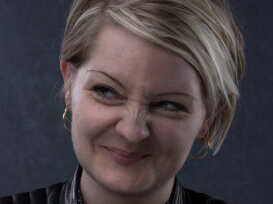Research
What does the latest neuroscience studies and the latest psychological studies have to do with business, illustration, animation and storytelling? A lot in fact!
At Levende Streg we base our video production, illustrations and animation on the latest research on how people see, perceive, understand and take in knowledge and learning. That’s why our visual communication works!
THE BRAIN AND VISUALS
Without you actually noticing, you’re using about 25 percent of your brain capacity to analyze and create understanding of what you see. And just a quick fact here: According to neuroscientists and neurologists a normal human brain is estimated to having about 86 billion neurons (Source: Bradley Voytek). That’s why it’s so important that you get your visual communication right.
And by the way, the myth about humans only using 10% of our brains os just that – a myth!
Read more in this article and check out this great TED video.
FEELING IS THE ANSWER
Want your video or visual communication to have an impact? Feeling is the answer! And yes, you know how it goes: Feelings! Nothing more than feelings!
In the middle brain there is a neucleus (a cluster of neurons) called the amygdala – a part of the limbic system. This is the part of the brain involved with emotion and instinct.
This part of the brain helps us humans to identify hazards and quickly activate our “fight or flight mechanism”, if something seems threatening to us. And, as it happens, some parts of the limbic system is also closely linked to memory too (amygdala and hippocampus).
The amygdala has with emotion attached to memory making. Hippocampus has to do with the context – time and place a memorial created.
This means that it if you want your receiver to remember your message, feeling is essential. Your visual communication, your video, your animation – must make your receiver feel something! This can either be done by shock, creating anxiety and fear (this is really a common marketing trick) or create a good feeling that touches your receiver and shows the way.
MICRO EXPRESSIONS
Micro Expression is what makes your visual communication crisp and easy to understand. Micro Expression is a short and involuntary facial expression we humans show in split seconds. They express our feelings. Microprints can not be manipulated with or faked – as opposed to normal longer facial expressions. They often appear in 1/15 to 1/25 of a second. That means micro expressions are something we decipher unconsciously.
Read our blog post about micro expressions in company communication or read more about micro expressions in general.
INFLUENCED BY VISUALS
Whether you like it or not, your brain analysis and interprets everything you see. You brain scans your surroundings to check if something seems threatening, unsafe or uncomfortable for you. And it sets markers in your nervous system.
Translated into less geeky language – when you’re looking at a picture of a man looking scared and anxious, your brain decodes danger signals – and put you in alert mode.
MEDIA WITHOUT NOISE
That is why it is important that the company starts to communicate in a way that speaks to their recipient’s brain and heart – and in a form of media that does it without noise.
With animation videos your company chooses how much – or how little – noise should be included in your video; and how expressions, pictures, illustration and sound should be combined.
That’s why drawn and animated videos are so popular with companies for corporate communication. Visionary companies now chose animted and illustrated videos – where message and storytelling is in focus. Because that’s what really talks to their recipients.
DO YOU WANT TO READ MORE ABOUT OUR RESEARCH?
See this video: NEUROSCIENCE OF BUSINESS STORYTELLING
You can also watch this video: 3 WAYS THE BRAIN CREATES MEANING
If you want to learn more about our research, then give us a call.
